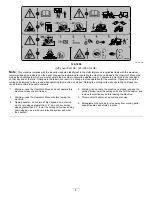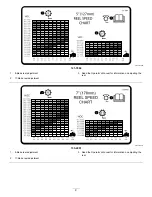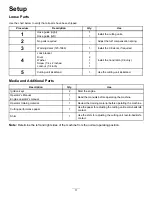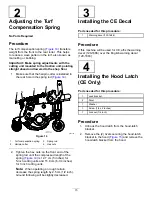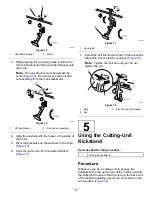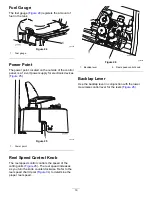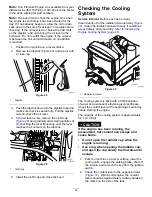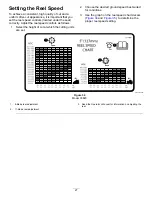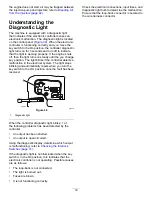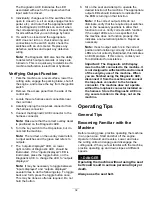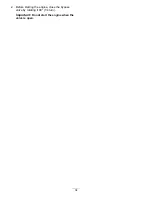
Performing Daily
Maintenance
Service Interval:
Before each use or daily
Before starting the machine each day, perform the
Each Use/Daily procedures listed in
(page 35)
.
Filling the Fuel Tank
Use only clean, fresh diesel fuel or biodiesel fuels with
low (<500 ppm) or ultra-low (<15 ppm) sulfur content.
The minimum cetane rating should be 40. Purchase
fuel in quantities that can be used within 180 days
to ensure fuel freshness.
The fuel tank capacity is approximately 42 L (11 US
gallons).
Use summer-grade diesel fuel (Number 2-D) at
temperatures above -7°C (20°F) and winter-grade
diesel fuel (Number 1-D or Number 1-D/2-D blend)
below -7°C (20°F). Using winter-grade fuel at lower
temperatures provides lower flash point and cold flow
characteristics which will ease starting and reduce
plugging of the fuel filter.
Using summer-grade fuel above -7°C (20°F) will
contribute toward longer fuel-pump life and increased
power compared to winter-grade fuel.
The machine is
biodiesel ready
.
This machine can also use a biodiesel blended fuel
of up to B20 (20% biodiesel, 80% petrodiesel). The
petrodiesel portion should be low or ultra-low sulfur.
Observe the following precautions:
•
The biodiesel portion of the fuel must meet
specification ASTM D6751 or EN14214.
•
The blended fuel composition should meet ASTM
D975 or EN590.
•
Painted surfaces may be damaged by biodiesel
blends.
•
Use B5 (biodiesel content of 5%) or lesser blends
in cold weather.
•
Monitor seals, hoses, and gaskets in contact with
fuel as they may degrade over time.
•
Expect plugging of the fuel filter for a time after
converting to biodiesel blends.
•
Contact your distributor if you wish for more
information on biodiesel.
1.
Park the machine on a level surface, lower the
cutting units, engage the parking brake, shut off
the engine, and remove the key from the ignition
switch.
2.
Clean the area around the fuel-tank cap (
3.
Remove the fuel-tank cap.
4.
Fill the tank to the bottom of the filler neck.
Do
not overfill the tank.
5.
Install the cap.
6.
To prevent a fire hazard, wipe up any fuel that
may have spilled.
g008884
Figure 27
1.
Fuel-tank cap
DANGER
Under certain conditions, fuel and
fuel vapors are highly flammable and
explosive. A fire or explosion from fuel
can burn you and others and can cause
property damage.
Do not fill the fuel tank completely full.
Add fuel to the fuel tank until the level
is 6 to 13 mm (1/4 to 1/2 inch) below the
bottom of the filler neck. This empty
space in the tank allows the fuel to
expand.
Checking the Level of the
Engine Oil
Service Interval:
Before each use or daily
The engine comes with oil in the crankcase; however,
you must check the oil level before and after you first
start the engine.
The crankcase capacity is approximately 3.8 L (4 US
qt) with the filter.
Use high-quality engine oil that meets the following
specifications:
•
API classification level required: CH-4, CI-4, or
higher.
•
Preferred oil: SAE 15W-40—above 0ºF (-17ºC)
•
Alternate oil: SAE 10W-30 or 5W-30—all
temperatures)
21
Summary of Contents for 03820
Page 53: ...Notes ...
Page 54: ...Notes ...


